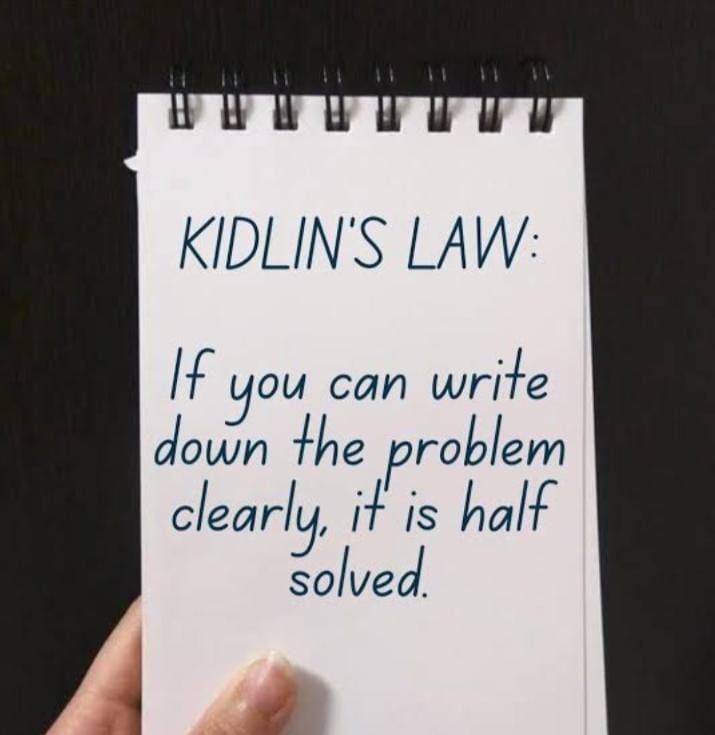18th September 2024
Have you ever faced a problem that seemed too complex or overwhelming to solve?
Maybe you felt stuck, frustrated, or confused about what to do next.
You may have wasted a lot of time and energy trying different solutions that didn’t work.
You may have even given up on solving the problem altogether.
If this sounds familiar, you are not alone. Many people need help with problem-solving, especially when the problem is vague, ambiguous, or multifaceted.
But what if there was a simple way to make any problem easier to solve? What if there was a law that could help you cut through the mess and get to the core of the issue?
They say in business, whatever gets written gets done. This is especially true while making business plans.
Kidlin Law states that “If you write a problem in clear and specific steps, you actually have half solved it.”
It is the basic principle of problem-solving which got its name after Kidlin, a fictional character in a novel by James Clavell, an Australian-born British writer, screenwriter, director, and World War II veteran and prisoner of war, who used this technique to solve various challenges in his life.
Here are some steps to follow:
1) Define the problem: The first step is to write down the problem clearly and concisely. Avoid vague or general statements, such as “I’m unhappy” or “I need more money”.
Instead, be specific and concrete, such as “I’m unhappy with my current job because it doesn’t match my skills and interests” or “I need more money to pay off my debt and save for retirement.”
2) Analyse the problem: The next step is to break down the problem into smaller and simpler parts.
Ask yourself questions like, What are the causes of the problem? What are the effects of the problem? What are the constraints or limitations of the problem? What are the assumptions or beliefs behind the problem? What are the goals or desired outcomes of solving the problem?
3) Generate solutions: The third step is brainstorming possible solutions for each part of the problem. Don’t judge or evaluate your ideas at this stage; write down as many as possible.
Be creative and open-minded; try to think of different angles and perspectives. You can use mind mapping, listing, or free writing techniques to generate solutions.
4) Evaluate solutions: The fourth step is to evaluate your answers and choose the best one for each part of the problem.
Consider feasibility, effectiveness, efficiency, cost, risk, and impact factors. You can use tools like pros and cons lists, SWOT analysis, decision matrices, or scoring systems to evaluate solutions.
5) Implement solutions: The final step is to implement your chosen answers and monitor their results. Write down an action plan that specifies what you will do, when you will do it, how you will do it, and who will be involved.
Set deadlines and milestones for each action. Track your progress and measure your outcomes. If necessary, adjust your solutions based on feedback and new information.
Following these steps, you can use Kidlin’s Law to solve any problem faster and easier.
Kidlin Law also helps in reduces stress as it enables you to get clarity of mind and make your thoughts streamlined.
So next time you face a problem that seems too hard to solve, remember Kidlin’s Law: “If you write the problem down clearly, then the matter is half solved.”
Try it out and see how it works for you & stay blessed forever.

